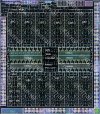I already said that. Forget about the damn pricing for a second. These cards... and all generations of cards.. are separated into tier ranges by Nvidia and AMD. There's acceptable price ranges for each tier of card.That’s not how prices are determined. At best costs create a floor for minimum pricing. They definitely do not determine maximum pricing. Competition and consumer demand drives that. The average person has zero idea what the manufacturer is “getting out of the chip” and it’s not part of the value proposition.
We’re not buying tiers or brand names. Your entire framework for thinking about this is based on immaterial attributes of the product.
Nah, It's entirely based off what value Nvidia thinks these tiers are worth relative to each other.


